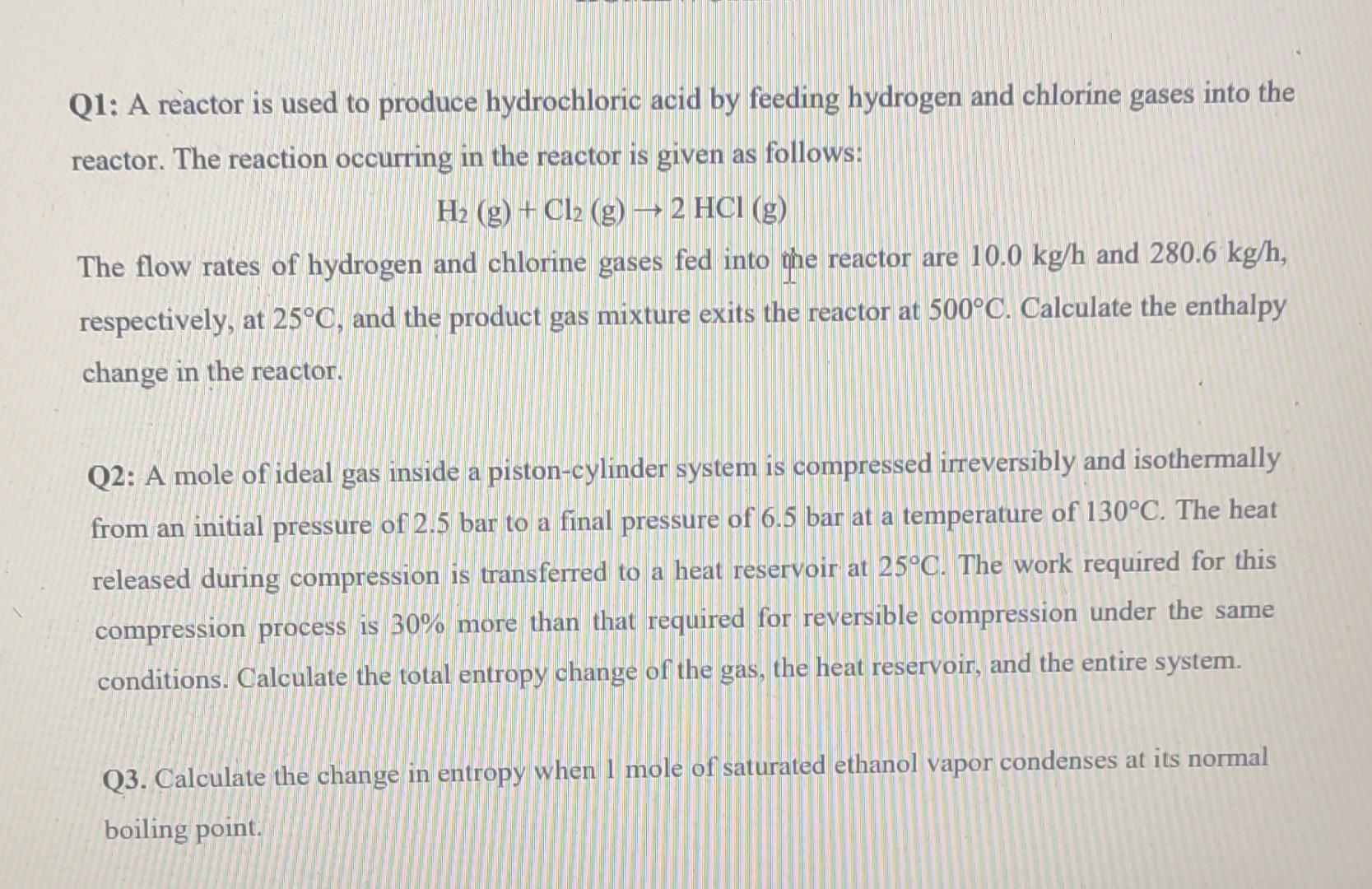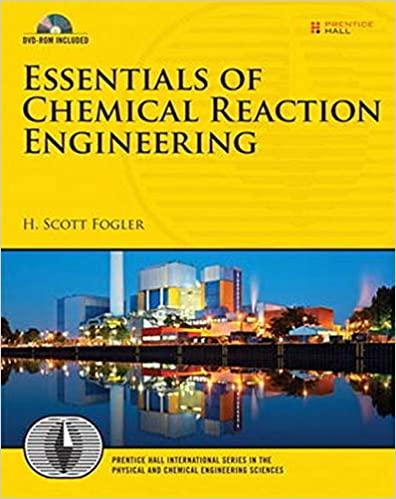Answered step by step
Verified Expert Solution
Question
1 Approved Answer
. Q1: A reactor is used to produce hydrochloric acid by feeding hydrogen and chlorine gases into the reactor. The reaction occurring in the reactor
.

Q1: A reactor is used to produce hydrochloric acid by feeding hydrogen and chlorine gases into the reactor. The reaction occurring in the reactor is given as follows: H2(g)+Cl2(g)2HCl(g) The flow rates of hydrogen and chlorine gases fed into the reactor are 10.0kg/h and 280.6kg/h, respectively, at 25C, and the product gas mixture exits the reactor at 500C. Calculate the enthalpy change in the reactor. Q2: A mole of ideal gas inside a piston-cylinder system is compressed irreversibly and isothermally from an initial pressure of 2.5 bar to a final pressure of 6.5 bar at a temperature of 130C. The heat released during compression is transferred to a heat reservoir at 25C. The work required for this compression process is 30% more than that required for reversible compression under the same conditions. Calculate the total entropy change of the gas, the heat reservoir, and the entire system. Q3. Calculate the change in entropy when 1 mole of saturated ethanol vapor condenses at its normal boiling point
Step by Step Solution
There are 3 Steps involved in it
Step: 1

Get Instant Access to Expert-Tailored Solutions
See step-by-step solutions with expert insights and AI powered tools for academic success
Step: 2

Step: 3

Ace Your Homework with AI
Get the answers you need in no time with our AI-driven, step-by-step assistance
Get Started


